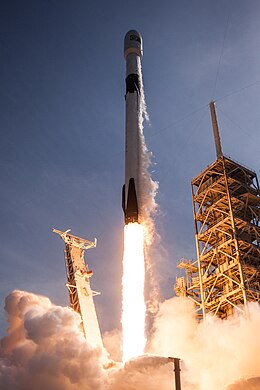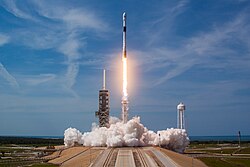
A reusable launch vehicle has parts that can be recovered and reflown, while carrying payloads from the surface to outer space. Rocket stages are the most common launch vehicle parts aimed for reuse. Smaller parts such as rocket engines and boosters can also be reused, though reusable spacecraft may be launched on top of an expendable launch vehicle. Reusable launch vehicles do not need to make these parts for each launch, therefore reducing its launch cost significantly. However, these benefits are diminished by the cost of recovery and refurbishment.

A booster is a rocket used either in the first stage of a multistage launch vehicle or in parallel with longer-burning sustainer rockets to augment the space vehicle's takeoff thrust and payload capability. Boosters are traditionally necessary to launch spacecraft into low Earth orbit, and are especially important for a space vehicle to go beyond Earth orbit. The booster is dropped to fall back to Earth once its fuel is expended, a point known as booster engine cut-off (BECO).

A launch vehicle is typically a rocket-powered vehicle designed to carry a payload from Earth's surface or lower atmosphere to outer space. The most common form is the ballistic missile-shaped multistage rocket, but the term is more general and also encompasses vehicles like the Space Shuttle. Most launch vehicles operate from a launch pad, supported by a launch control center and systems such as vehicle assembly and fueling. Launch vehicles are engineered with advanced aerodynamics and technologies, which contribute to high operating costs.

Falcon 9 is a partially reusable medium-lift launch vehicle that can carry cargo and crew into Earth orbit, designed, manufactured and launched by American aerospace company SpaceX. It can also be used as an expendable heavy-lift launch vehicle. The first Falcon 9 launch was on 4 June 2010. The first Falcon 9 commercial resupply mission to the International Space Station (ISS) launched on 8 October 2012. In 2020 it became the first commercial rocket to launch humans to orbit and remains the only such vehicle. It is the only U.S. rocket certified for transporting humans to the ISS. In 2022, it became the U.S. rocket with the most launches in history and with the best safety record, having suffered just one flight failure.
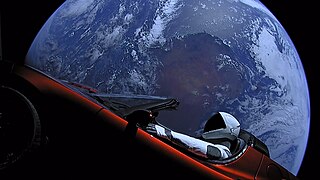
This article documents notable spaceflight events during the year 2018. For the first time since 1990, more than 100 orbital launches were performed globally.

SpaceX has privately funded the development of orbital launch systems that can be reused many times, similar to the reusability of aircraft. SpaceX has developed technologies over the last decade to facilitate full and rapid reuse of space launch vehicles. The project's long-term objectives include returning a launch vehicle first stage to the launch site within minutes and to return a second stage to the launch pad following orbital realignment with the launch site and atmospheric reentry in up to 24 hours. SpaceX's long term goal would have been reusability of both stages of their orbital launch vehicle, and the first stage would be designed to allow reuse a few hours after return. Development of reusable second stages for Falcon 9 was later abandoned in favor of the development of Starship, however, SpaceX developed reusable payload fairings for the Falcon 9.

SpaceX CRS-3, also known as SpX-3, was a Commercial Resupply Service mission to the International Space Station (ISS), contracted to NASA, which was launched on 18 April 2014. It was the fifth flight for SpaceX's uncrewed Dragon cargo spacecraft and the third SpaceX operational mission contracted to NASA under a Commercial Resupply Services (CRS-1) contract.
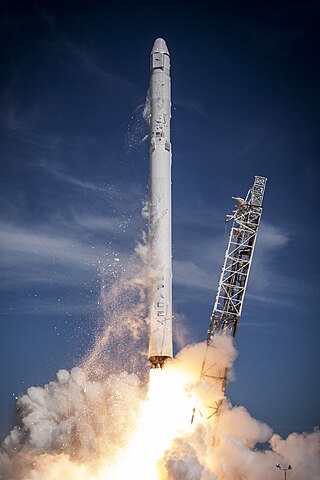
Falcon 9 v1.1 was the second version of SpaceX's Falcon 9 orbital launch vehicle. The rocket was developed in 2011–2013, made its maiden launch in September 2013, and its final flight in January 2016. The Falcon 9 rocket was fully designed, manufactured, and operated by SpaceX. Following the second Commercial Resupply Services (CRS) launch, the initial version Falcon 9 v1.0 was retired from use and replaced by the v1.1 version.

The Falcon 9 first-stage landing tests were a series of controlled-descent flight tests conducted by SpaceX between 2013 and 2016. Since 2017, the first stage of Falcon 9 missions has been routinely landed if the rocket performance allowed it, and if SpaceX chose to recover the stage.

An autonomous spaceport drone ship (ASDS) is an ocean-going vessel derived from a deck barge, outfitted with station-keeping engines and a large landing platform, and is autonomously positioned when on station for a landing. Construction of the drone ships was commissioned by aerospace company SpaceX to allow recovery of launch vehicle boosters at sea for missions that do not carry sufficient fuel to return to the launch site after boosting spacecraft onto an orbital or interplanetary trajectory.

Falcon 9 Full Thrust is a partially reusable medium-lift launch vehicle, designed and manufactured by SpaceX. It was first designed in 2014–2015, with its first launch operations in December 2015. As of 4 March 2024, Falcon 9 Full Thrust had performed 285 launches without any failures. Based on the Laplace point estimate of reliability, this rocket is the most reliable orbital launch vehicle in operation.

Dragon, also known as Dragon 1 or Cargo Dragon, was a class of fourteen partially reusable cargo spacecraft developed by SpaceX, an American private space transportation company. The spacecraft flew 23 missions between 2010 and 2020. Dragon was launched into orbit by the company's Falcon 9 launch vehicle to resupply the International Space Station (ISS).

Falcon 9 booster B1048 was a reusable orbital-class Block 5 Falcon 9 first-stage booster manufactured by SpaceX. B1048 was the third Falcon 9 Block 5 to fly and the second Block 5 booster to re-fly. It became the second orbital-class booster to fly a third time and is the first booster ever to be launched five times. B1048 service came to an end on its fifth flight when an engine shut down prematurely on launch. Whilst the primary mission was unaffected and the Starlink payload deployed successfully, B1048 was unable to land. In a subsequent investigation, SpaceX found that isopropyl alcohol, used as cleaning fluid, was trapped and ignited causing the engine to be shut down. To address the issue, in a following launch SpaceX indicated that the cleaning process was not done.
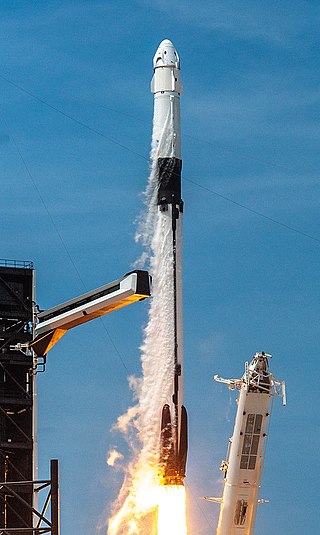
Falcon 9 Block 5 is a partially reusable two-stage-to-orbit medium-lift launch vehicle designed and manufactured in the United States by SpaceX. It is the fifth version of Falcon 9 Full Thrust, powered by SpaceX Merlin engines burning rocket-grade kerosene (RP-1) and liquid oxygen (LOX).
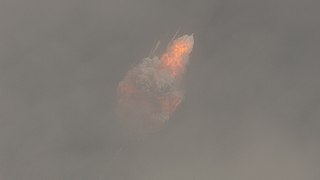
SpaceXCrew Dragon In-Flight Abort Test was a successful test of the SpaceX Dragon 2 abort system, conducted on 19 January 2020. It was the final assessment for the Crew Dragon capsule and Falcon 9 launch system before they would be certified to carry humans into space. Booster B1046.4 and an uncrewed capsule C205 were launched from Launch Complex 39A (LC-39A) on a suborbital trajectory, followed by an in-flight abort of the capsule at max Q and supersonic speed. The test was carried out successfully: the capsule pulled itself away from the booster after launch control commanded the abort, and landed safely.

Telkom 4, also known as Merah Putih, is an Indonesian geostationary communication satellite built by Space Systems/Loral that is located at an orbital position of 108° East and is operated by PT Telekomunikasi Indonesia Tbk. The satellite is based on the SSL 1300 satellite bus and has a life expectancy of 16 years. It was launched on 7 August 2018, at 05:18 UTC or 12:18 Jakarta Time, using the SpaceX Falcon 9 Block 5 launcher from Cape Canaveral Air Force Station, Florida, United States.

Falcon 9 booster B1058 was a reusable Falcon 9 Block 5 first-stage booster manufactured by SpaceX. B1058 was the first Falcon 9 booster to fly fourteen, fifteen, sixteen, seventeen, eighteen and nineteen times and broke a turnaround record on its later flights. Its first flight was for Crew Dragon Demo-2, the first crewed orbital spaceflight by a private company. The booster was the first and only Falcon 9 booster to feature NASA's worm logo and meatball insignia, which was reintroduced after last being used in 1992. The booster's service ended shortly after its nineteenth successful landing when it toppled over on the droneship due to high winds and rough seas.
